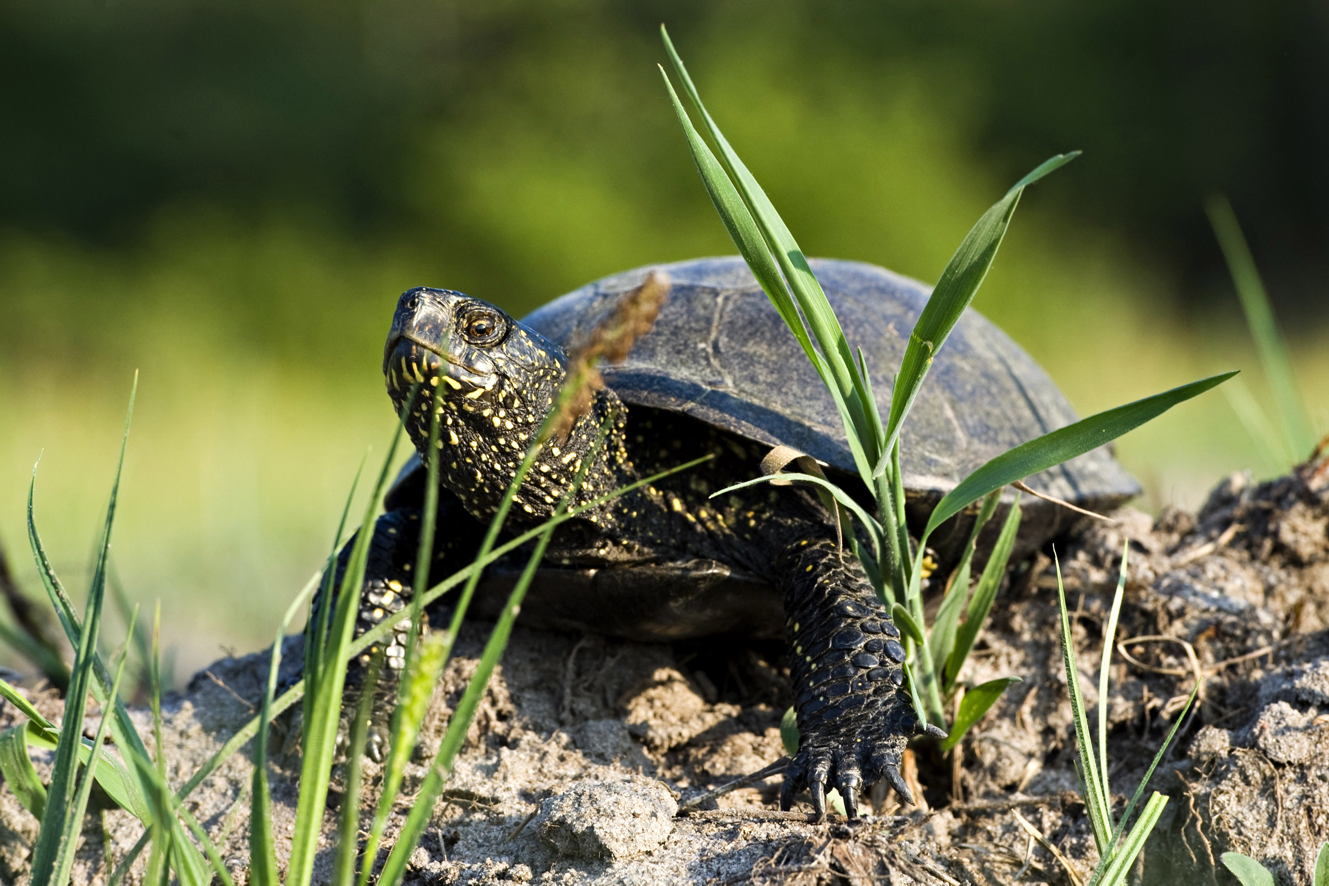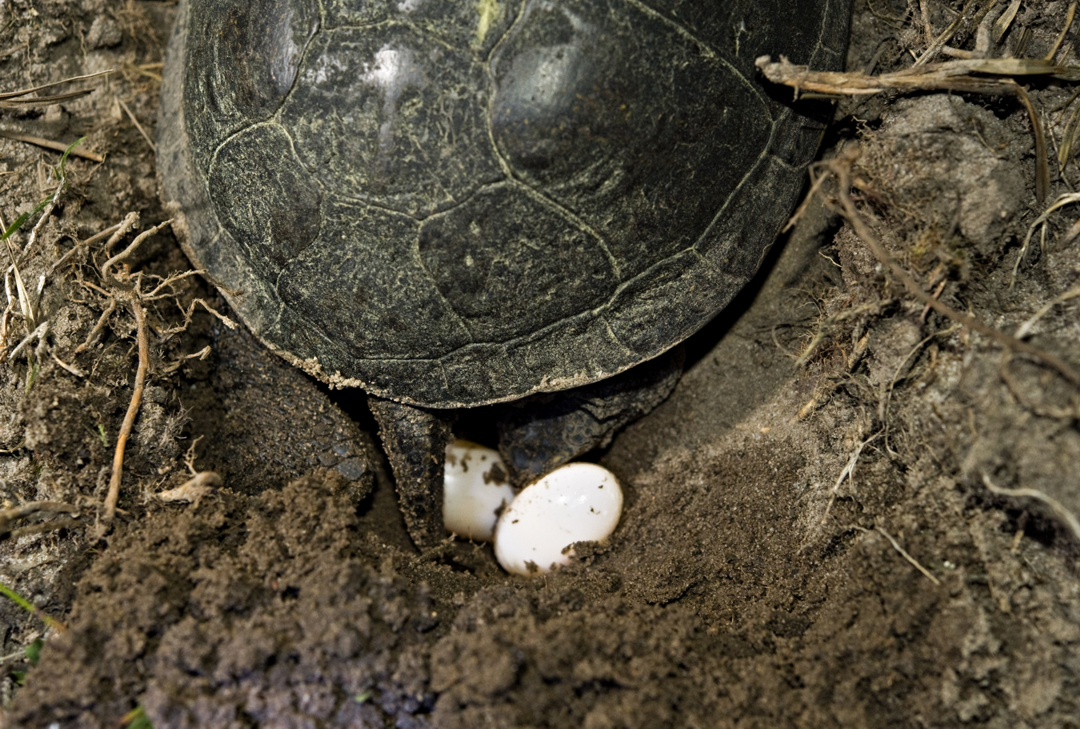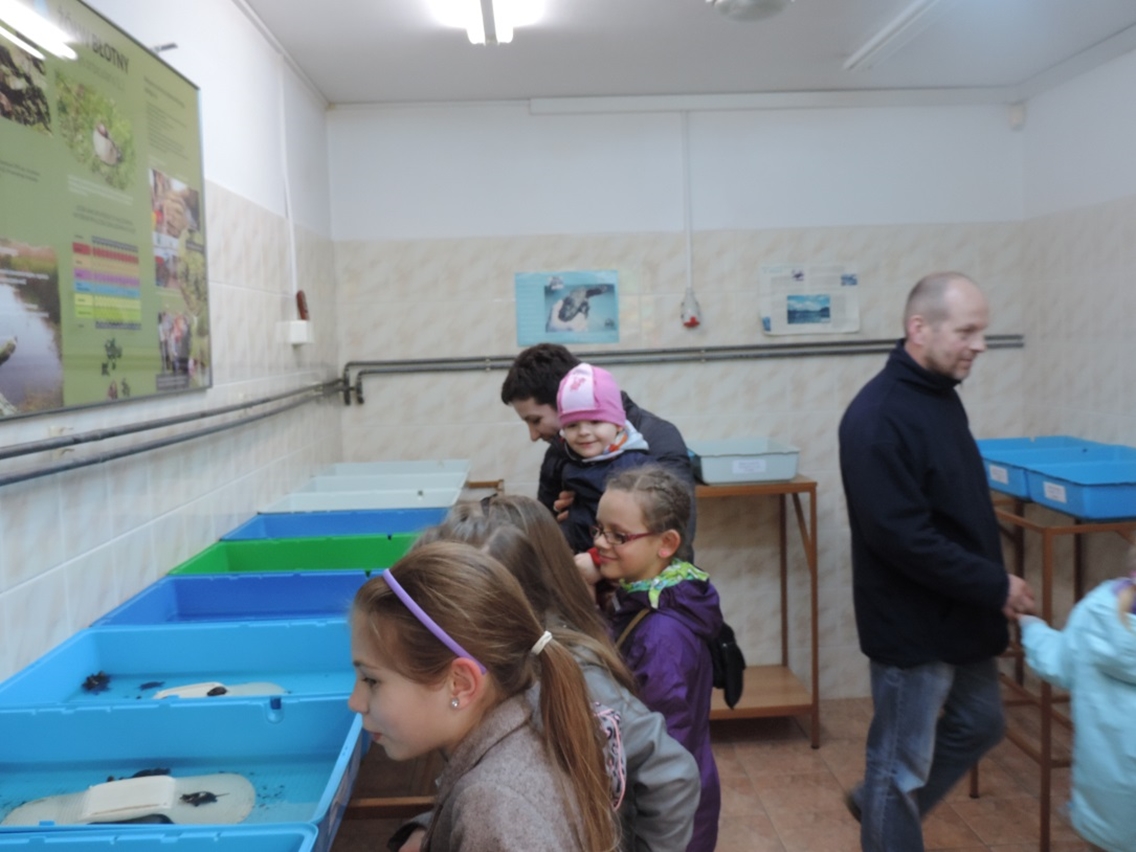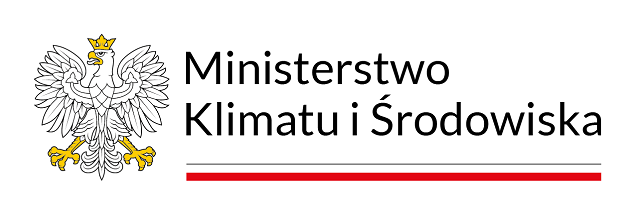The protection of the European pond turtle

The European pond turtle is a reptile listed on the Polish and European Red List of Threatened Species as an endangered species, and carrying out active protection of this species is a necessity. Such actions, for many years, have been carried out in the Poleski National Park. They consist, among others, of observation of female turtle on the breeding grounds, the location and protection of the deposits of the eggs laid by the females from predators.

ô
In cases when the summertime was cool and the turtles did not manage to hatch before winter, the eggs from the endangered deposits are moved to the Preservation Centre of the European Pond Turtle PNP. Here, the turtle eggs are incubated and after hatching of the little turtles, employees are looking after them for the period of winter. The little ones, at that time, are fed and measured and weighed so that it will be possible to control their correct development. At the same time, the procedures in the scope of the biotope protection of the European pond turtle consisting of keeping the appropriate high level of water, cutting off bushes and the reconstruction of small, shallow reservoirs - pools in the places of living turtle are being carried out.
The Park has been carrying out the active protection of the European pond turtle from 1998. Its effect is storing of 510 egg deposits, from which, after breeding, 2,630 small turtles were let out into their natural habitat. In this way, a native population is being powered and the chances for survival in an environment full of dangers by the young ones are increased.
Observations and research allowing us to deepen the knowledge about the biology of this reptile are also being conducted. This knowledge constitutes the ground for conducting all the protective procedures. In this way, naturalists are trying to prevent the extinction of the European pond turtle from the map of our country for ever.
Preservation Centre of the European Pond Turtle
In the Preservation Centre of the European Pond Turtle the proper conditions to incubate the turtles (it is equipped with warmed-up incubators that are crucial in the incubation process) were created. In incubators, the turtle eggs taken from the endangered nests go through the last period of incubation.
Young turtles, which hatch in incubators, are kept in PCEPT through the period of winter. The specimens coming from the same deposit are placed in separate terrariums filled with water. All turtles are individually marked. Turtles in the centre are fed mainly with non-biting midges, glass worms and house cricket larvae.
Moreover, every now and then, they are weighed and measured with the Uwe Fritz method (the length and the width of carapace, the length and two widths of the plastron, and their height).
In spring, when the water level in the reservoirs surrounding the breeding grounds is appropriately high, and the water has warmed, small turtles after the sleepless first winter are introduced to their natural habitats.
ô ô 
ô



.jpg)










































